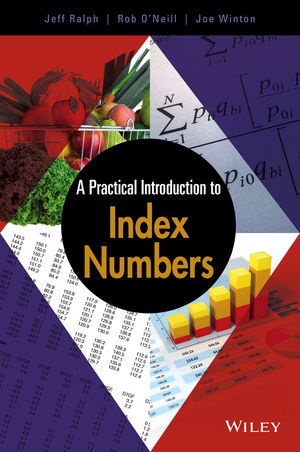Ulteriori informazioni
Informationen zum Autor Dr Jeff Ralph , Head of Index Number Methodology, Office for National Statistics, Cardiff, UK Mr Joe Winton , Statistical Training Unit, Office for National Statistics, Cardiff, UK Dr Robert O'Neill , Lecturer in Economics, University of Huddersfield, UK Klappentext This book provides an introduction to index numbers for statisticians, economists and numerate members of the public. It covers the essential basics, mixing theoretical aspects with practical techniques to give a balanced and accessible introduction to the subject. The concepts are illustrated by exploring the construction and use of the Consumer Prices Index which is arguably the most important of all official statistics in the UK. The book also considers current issues and developments in the field including the use of large-scale price transaction data.A Practical Introduction to Index Numbers will be the ideal accompaniment for students taking the index number components of the Royal Statistical Society Ordinary and Higher Certificate exams; it provides suggested routes through the book for students, and sets of exercises with solutions. Zusammenfassung This book provides an introduction to index numbers for statisticians, economists and numerate members of the public. It covers the essential basics, mixing theoretical aspects with practical techniques to give a balanced and accessible introduction to the subject. Inhaltsverzeichnis Preface xi Acknowledgements xv 1 Introduction 1 1.1 What is an index number? 1 1.2 Example - the Consumer Prices Index 2 1.3 Example - FTSE 100 5 1.4 Example - Multidimensional Poverty Index 6 1.5 Example - Gender Inequality Index 6 1.6 Representing the world with index numbers 7 1.7 Chapter summary 8 References 8 2 Index numbers and change 9 2.1 Calculating an index series from a data series 9 2.2 Calculating percentage change 11 2.3 Comparing data series with index numbers 13 2.4 Converting from an index series to a data series 14 2.5 Chapter summary 16 Exercise A 17 3 Measuring inflation 19 3.1 What is inflation? 19 3.2 What are inflation measures used for and why are they important? 20 3.2.1 Determination of monetary policy by a central bank 21 3.2.2 Changing of provisions for private pensions 21 3.2.3 Changes in amounts paid over long-term contracts 21 3.2.4 Changes in rail fares and other goods 22 3.2.5 Evaluating investment decisions 22 3.2.6 Inputs to economic research and analysis 23 3.2.7 Index-linked debt 23 3.2.8 Tax allowances 23 3.2.9 Targets for stability of the economy in an international context 23 3.3 Chapter summary 24 References 24 Exercise B 25 4 Introducing price and quantity 27 4.1 Measuring price change 27 4.2 Simple, un-weighted indices for price change 30 4.2.1 Simple price indices 30 4.2.2 Simple quantity indices 33 4.3 Price, quantity and value 34 4.4 Example - Retail Sales Index 35 4.5 Chapter summary 36 Exercise C 37 5 Laspeyres and Paasche indices 39 5.1 The Laspeyres price index 40 5.2 The Paasche price index 41 5.3 Laspeyres and Paasche quantity indices 43 5.4 Laspeyres and Paasche: mind your Ps and Qs 45 5.4.1 Laspeyres price index as a weighted sum of price relatives 45 5.4.2 Laspeyres quantity index as a weighted sum of quantity relatives 46 5.4.3 Paasche price index as a weighted harmonic mean of price relatives 46 5.4.4 Paasche quantity index as a weighted harmonic mean of quantity relatives 46 5.5 Laspeyres, Paasche and the Index Number Problem 48 5.6 Laspeyres or Paasche? 49 5.7 A more pra...

